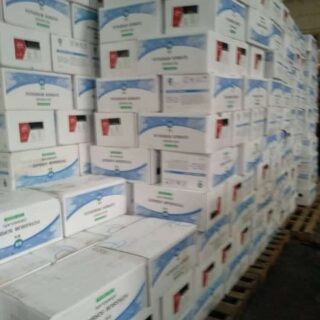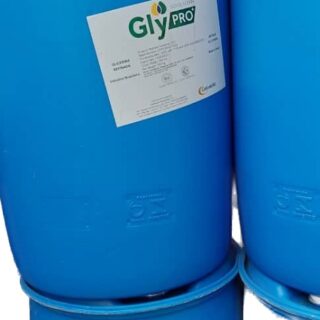Product Tags

Vegetable Shortening
Vegetable shortening is a solid fat that is made from vegetable oils, such as soybean oil, cottonseed oil, and palm oil. It is a versatile ingredient that can be used in a variety of food and beverage products.
Uses of Vegetable Shortening
Vegetable shortening is a versatile ingredient that can be used in a variety of food and beverage products, including:
- Baked goods: Vegetable shortening is a popular ingredient in baked goods, such as cakes, cookies, and pastries. It helps to give baked goods a tender, flaky texture.
- Soups and sauces: Vegetable shortening is used to thicken soups and sauces and prevent them from separating. It also gives soups and sauces a creamy texture.
- Dairy products: Vegetable shortening is used to make dairy products, such as frozen desserts and whipped cream, more stable. It also gives dairy products a richer flavor.
- Meat products: Vegetable shortening is used to make meat products, such as meatballs and burgers, more tender and juicy. It also helps to prevent meat products from sticking to the pan.
- Condiments: Vegetable shortening is used to make condiments, such as mayonnaise and salad dressings, more spreadable. It also gives condiments a richer flavor.
- Desserts: Vegetable shortening is used to make desserts, such as pies and cakes, more tender and flaky. It also gives desserts a richer flavor.
- Drinks: Vegetable shortening is used to make drinks, such as milkshakes and smoothies, more creamy. It also helps to prevent drinks from separating.
Benefits of Vegetable Shortening
Vegetable shortening is a safe and effective food additive that has a number of benefits, including:
- It is a solid fat, which means it is stable at room temperature and can be used in a variety of food and beverage products.
- It is flavorless, which means it does not add any taste to food.
- It is colorless, which means it does not change the color of food.
- It is relatively inexpensive, making it a cost-effective choice for food manufacturers.
How to use Vegetable Shortening
Vegetable shortening can be used in a variety of ways, including:
- In baking: Vegetable shortening can be added to dry ingredients, such as flour, sugar, and cocoa powder. It should be cut into the dry ingredients with a pastry blender or two knives until it resembles coarse crumbs.
- In soups and sauces: Vegetable shortening can be added to soups and sauces by melting it in a saucepan over medium heat. It can then be added to the rest of the ingredients and cooked until the sauce is thickened.
- In dairy products: Vegetable shortening can be added to dairy products, such as frozen desserts and whipped cream, by beating it in until it is smooth and creamy.
- Meat products: Vegetable shortening can be added to meat products, such as meatballs and burgers, by mixing it in with the other ingredients. It can also be used to grease a baking pan or skillet before adding the meat.
- Condiments: Vegetable shortening can be added to condiments, such as mayonnaise and salad dressings, by stirring it in until it is smooth and creamy.
- Desserts: Vegetable shortening can be added to desserts, such as pies and cakes, by creaming it together with sugar until light and fluffy. It can also be used to grease a baking pan or skillet before adding the batter.
- Drinks: Vegetable shortening can be added to drinks, such as milkshakes and smoothies, by melting it in a saucepan over low heat. It can then be added to the rest of the ingredients and blended until smooth.
Storage of Vegetable Shortening
Vegetable shortening should be stored in an airtight container in a cool, dry place. It has a shelf life of about 1 year.
Related products
-
Vegetable Glycerin
Read moreVegetable glycerin is a clear, odorless, and sweet-tasting liquid that is made from plant oils, such as soybean, palm, and coconut oil. It is a humectant, which means that it attracts and holds moisture. Vegetable glycerin is used in a variety of products, including food, cosmetics, and pharmaceuticals.
-
Non Dairy Creamer
Read moreNon Dairy Creamer is a delicious and versatile creamer that is perfect for coffee, tea, and other beverages. It is made with all-natural ingredients, including coconut oil, sunflower oil, and tapioca syrup.
-
Xanthan Gum
Read moreXanthan gum is a food additive that is used as a thickener, stabilizer, and emulsifier in a variety of food and beverage products. It is a white, odorless, and tasteless powder that is made from the fermentation of cornstarch by the bacterium Xanthomonas campestris.
-
Gelatin Powder
Read moreGelatin powder is a versatile ingredient that is used as a thickener, stabilizer, and emulsifier in a variety of food and beverage products. It is a clear, odorless, and tasteless powder that is made from collagen, a protein found in animal bones, skin, and connective tissue.
Testimonials

Funsho Williams
I've been using Azchem Resources' food flavors for years, and I'm always impressed with the quality and consistency of their products.

Ugochi Udemba
I've been using Azchem Resources' food colors for a few months now, and I'm very happy with them. Their colors are vibrant and easy to use, and they don't taste artificial.
Our Blog













Reviews
There are no reviews yet.